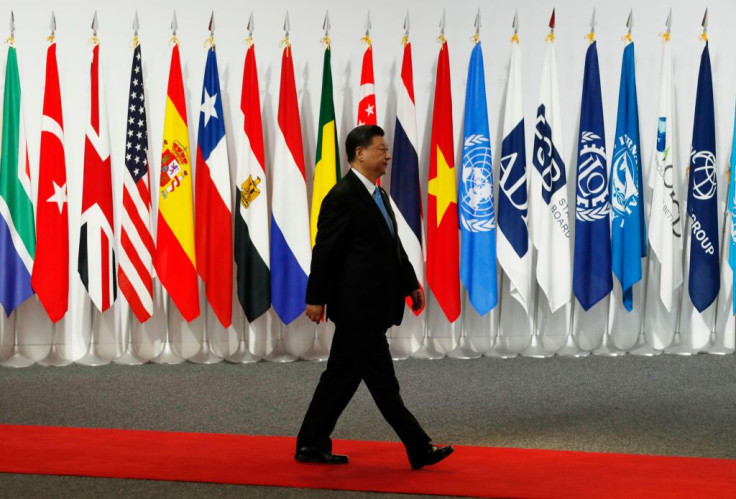Dow Futures Surge 220 Points As Trump, Xi Agree Not To Add More Tariffs

The bears hounding Wall Street faded into the shadows for the time being with U.S. futures surging Sunday evening after president Donald Trump promised not to levy tariffs of 25 percent on Chinese exports to the U.S. amounting to $300 billion.
Sources cited by media said Trump's huge concession was the price Trump had to pay for being allowed an audience with Chinese president Xi Jinping at the G20 summit in Osaka, Japan that ended Saturday.
The benchmark Dow Jones Industrial Average futures wound-up 224 points higher Sunday, which translates into a gain of 219 points at Monday’s open. The S&P 500 and the NASDAQ Composite 100's futures also improved sharply, with gains of 0.8 percent and 1.3 percent, respectively.
"There was a great deal of bearishness in sentiment headed into the meeting," said Dan Deming, managing director at KKM Financial. "Many market observers were discounting any change in the narrative, which made many believe the risk was to the downside."
Investors fidgeted nervously ahead of the meeting between Trump and Xi lacking firm clues China and the U.S. intend to resume talks aimed at mitigating the trade war. The pause in Trump's trade war still leaves Wall Street seriously concerned, however.
The Trump-Xi meeting is only “an uncertain pause," according to Chetan Ahya, chief economist and global head of economics at Morgan Stanley.
Ahya pointed out there is “no immediate escalation, but still no clear path towards a comprehensive deal."
"As things stand, we lack clarity on whether real progress was achieved on the sticking points that caused talks to break down in the first place," he said in a note to investors.
"Hence, our overarching conclusion is that the developments over the weekend on their own don’t do enough to remove the uncertainty created by trade tensions.
The demoralizing vagueness surrounding the true state of U.S.-China trade relations will continue to depress the outlook on corporate earnings, according to Larry McDonald, editor of The Bear Traps Report.
“CFO’s cannot make decisions with a purgatory of uncertainty, endlessly ... hanging over the market,” said McDonald. “The equity rally is a screaming sell.”
At Osaka, Xi and Trump consented to an uneasy trade war truce. Both leaders agreed not to levy new tariffs on each other exports -- for the time being.
Flaunting his usual bravado, Trump said his meeting with Xi went as well as it could have.
"We are right back on track," boasted Trump.
Trump again claimed China will “buy U.S. farm products,” which China hasn't really promised to do.
China's assessment of the brief encounter was more subdued, however.

State-owned Xinhua, China's largest news agency, only said both men agreed to “to restart trade consultations between their countries on the basis of equality and mutual respect."
But in a surprising move, Trump also said the U.S. will ease restrictions on American companies selling products to banned Huawei Technologies Co. Ltd. The U.S. barred U.S. firms from selling to Huawei in May, citing national security concerns.
Trump’s trade war with China, which he boasted would be “easy to win,” is now a year old, and counting.
© Copyright IBTimes 2024. All rights reserved.





















